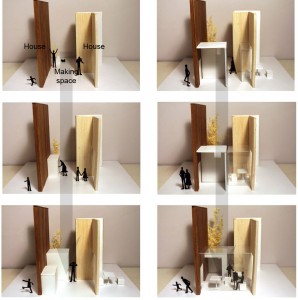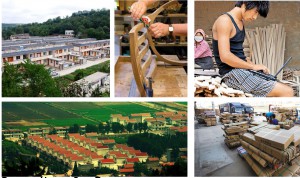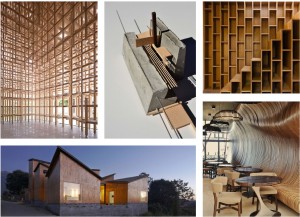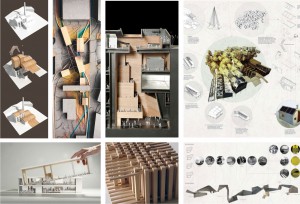Remoulding of Village Feather
|
Chinese rural area has gone through two developing models: one is the historical institution-“People’s commune (1958-1978)”- that invented communal architecture based on absolute communism and egalitarianism; the other is the current governmental policy-“Build a new socialist countryside (2006-)”- that produces private and homogeneous housing cluster all around China without any thinking about their jobs or traditions. As a result, the rural area in China becomes stereotyped without any feather. However, Chinese rural area is the museum of many traditional crafts. It do have feathers which is losing, The design focus on finding a new type of village housing cluster that can help rebuild the feather.
Dongfeng Village, Shaji Town what The project investigates Dongfeng village in Xuzhou, Jiangsu province, which is now famous for its DIY furniture making as the first Taobao village in China. Last 50 years, nearly ninety percentages of the population in this village are carpenters. They gain their living by making furniture by hand. Last 30 years, along with unprecedented urbanization, capital centralization, and labor migration, Chinese society has witnessed a significant decline of its rural area, many people left village and swarmed into cities, which caused the missing of traditional handcraft. Last 10 years, the rise of digital economy provides an alternative for them to make their living. More and more people go back to the village and start online stores on digital platform such as Taobao. Many people start their own DIY furniture making store. In 2006, Chinese government implemented a policy called “Building a new socialist countryside” that aims at maintaining the rural population and improving the living quality in the countryside, which cause many social queries because all the village in China now are the same without any localization. Kengo Kuma, Daniel Houghton, Sundaymorning and Massimo Fiorido Associati, Huali. Why In 2008, Hua Li, founder and chief architect of trace architecture office, start a project in Gaoligong, which is a handcraft paper making museum. The design aimed at expanding the usage of the paper and carry on the traditional craft and culture, which contains showing the history, process and production of paper making as well as receiving tourists and cultural communication. There are many artists and architectures as constructors themselves when carrying on their work, such as Ricard Serra, Walter Pichler, Carlo Scarpa, etc. they understood the importance of making, because the process of making is the generation of the work itself, and the application of different materials can be used to achieve certain effects and form the feather. My design, different from those predecessors, is trying to use this making process and local material as a tool of finding the feather of the village by digging into their working and living, forming a dynamic and interactive relation between the architecture and villagers. La-Castelnuovese Headquarters | KK Architetti Associati How
As a trying to regain the characteristic of the village, the thesis proposes a new complex for the rural area, which combined their working and living, trying to criticize the governmental policy-“build a new socialist countryside”, which produce homogeneous housing cluster in villages without any thinking on its feather. Specifically in the site, the design will try to find out the relation between working and living by digging into the dynamic interactivity between housing and handcrafts. The design also try to exploits the potential of C2C e-commerce, emphasizes the benefits of collective, challenges the preconceived division between private and public, spatializes residential and community programs for traditional making, invents economical and sustainable construction system, aggregates individual families into a collective “commune”, and finally seeks a new morphology as the architectural manifestation and catalyst for all the things above. |



